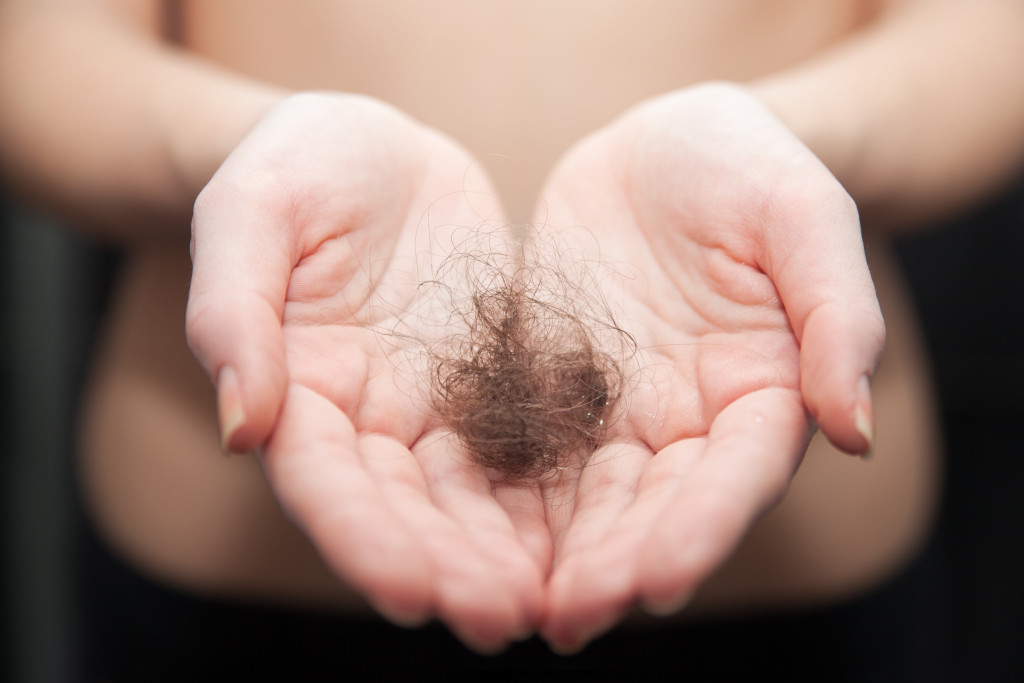Disclaimer: This website provides health information for educational purposes only and is not a substitute for professional medical advice, diagnosis, or treatment. Always seek the guidance of a qualified healthcare provider with any questions you may have.
- Maintaining a healthy lifestyle is important for managing pattern hair loss.
- Incorporate foods rich in vitamins, minerals and proteins into your diet.
- Explore topical treatments containing minoxidil or finasteride.
- Take into account the option of using oral medications and/or hair supplements for optimal results.
- Invest in scalp micropigmentation or explore hair restoration surgery.
Dealing with pattern hair loss can be a challenging experience, impacting both your appearance and self-confidence. Whether you’re a man or a woman, pattern hair loss, also known as androgenetic alopecia, is a common condition caused by genetics, hormonal changes, or age. While there might not be a one-size-fits-all solution, there are several strategies you can employ to manage and cope with pattern hair loss effectively. This guide will explore five practical tips to help you navigate this journey confidently and gracefully.
1. Embrace a Healthy Lifestyle
Maintaining a healthy lifestyle is crucial for managing pattern hair loss. Remember, a healthy body often translates to healthier hair.
Here are some tips for a healthy lifestyle:
Eat a Balanced Diet
Eating the right kinds of food can help promote healthy hair growth and reduce hair loss. Incorporate foods rich in vitamins, minerals, and proteins into your diet — such as lean meats, nuts, fruits and vegetables — for a comprehensive meal plan to nourish your body from head to toe. Plenty of omega-3 fatty acids, like those found in fish and avocados, can also help. Additionally, limit your consumption of processed and sugary foods that contain fewer nutrients.
Exercise Regularly
Incorporating physical activity into your daily routine helps improve blood flow throughout the body, including to the scalp, promoting healthy hair growth. Aim to exercise at least 30 minutes daily, five times weekly, for maximum benefits. If you’re new to fitness, start with low-intensity activities like walking and stretching, and work up from there.
Reduce Stress
Chronic stress can contribute to hair loss, so it’s important to reduce your stress and anxiety levels as much as possible. Taking time out to do simple activities like bathing, reading a book, or listening to music can help you relax and de-stress. Additionally, try incorporating some form of exercise into your daily routine — such as yoga or meditation — that can provide both physical and mental benefits.
Get Enough Sleep
Sleeping is essential for overall health and can help reduce hair loss. Aim to get at least seven hours of sleep per night, as insufficient rest can disrupt your body’s natural cycles and prevent it from functioning properly. Additionally, staying away from electronic devices — such as smartphones or laptops — before bedtime can help you get a better night’s rest.
2. Explore Topical Treatments
Over-the-counter topical treatments can effectively slow down hair loss and promote hair growth. Look for products containing minoxidil, a well-known over-the-counter medication approved by the FDA for treating pattern hair loss. Minoxidil improves blood flow to the hair follicles, stimulating hair growth. It’s available in various forms, such as liquid, foam, or shampoo. Consistency is key when using minoxidil — results may take several months to become noticeable.
Another option to explore is topical finasteride. This prescription medication is available in some regions and works by inhibiting the conversion of testosterone into dihydrotestosterone (DHT), a hormone linked to hair loss. Consult a dermatologist before starting any new treatment to determine the most suitable option for your condition.
3. Consider Oral Medications
Oral medications can also play a role in managing pattern hair loss. Finasteride, available in pill form, is a prescription medication that can effectively reduce DHT levels in the body. It’s important to note that finasteride might not suit everyone, and potential side effects should be discussed with a healthcare professional.
Another oral option is hair supplements containing biotin, vitamins, and minerals that support hair health. While research on the efficacy of such supplements is mixed, they might still be beneficial when combined with other treatments. Always consult a medical professional before incorporating oral medications or supplements into your routine.
4. Invest in Scalp Micropigmentation (SMP)
Investing in professional scalp micropigmentation is worth considering if you seek a non-invasive cosmetic solution. SMP is a procedure in which tiny pigment deposits are tattooed onto the scalp to mimic the appearance of hair follicles. This technique can create the illusion of a closely-shaven head or add density to thinning areas, boosting confidence for those with pattern hair loss.
SMP is a customizable option, allowing you to choose the hairline design and density that suits you best. Unlike some other treatments, it’s a low-maintenance choice that doesn’t require daily upkeep. However, it’s important to research and choose a reputable SMP practitioner who can deliver natural-looking results.
5. Explore Hair Restoration Surgery
For individuals seeking a more permanent solution, hair restoration surgery, such as follicular unit transplantation (FUT) or follicular unit extraction (FUE), can be an option. These procedures entail relocating hair follicles from regions of the scalp with abundant hair to areas that are thinning or balding. While hair restoration surgery can yield impressive, long-lasting results, it’s essential to have realistic expectations and consult a qualified surgeon to determine candidacy and potential outcomes.
In Summary
Pattern hair loss can be challenging, but with the right strategies, you can effectively manage its impact on your life. Embracing a healthy lifestyle, exploring topical treatments and oral medications, considering innovative solutions like SMP, and even contemplating hair restoration surgery are all viable paths. Remember, there’s no one-size-fits-all approach, so consulting with healthcare professionals and experts in the field can guide you toward the best choices for your needs. By taking proactive steps, you can regain control and confidence, empowering yourself to face pattern hair loss head-on.
